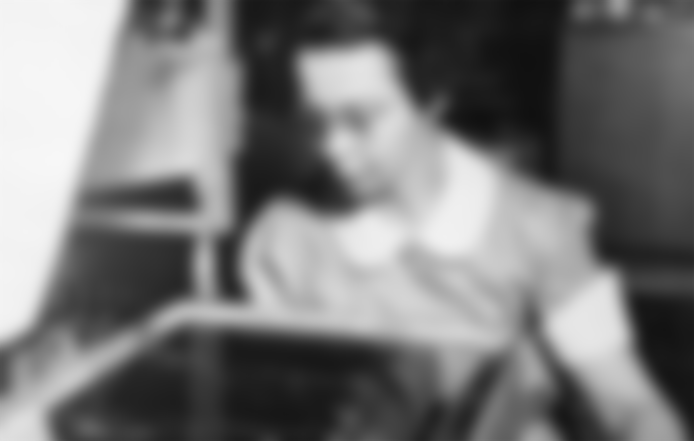When it comes to inventions that have changed and marked history, male names like Thomas Edison, Nikola Tesla, Leonardo Da Vinci and Alfred Nobel first come to mind. But what about the women who made history with their work? Although these inventions are very important for civilization, but also for the world now, many inventors have not received the recognition they deserve.
If no name comes to mind, I bring you 10 great inventions signed exclusively by women.
1. CAR WIPERS:

Back in 1903, Mary Anderson remembered that wipers on a car would be extremely useful. She patented a rod with a rubber extension that adheres to the glass a year later. Although her idea was put into series production only a few decades later, today we cannot imagine riding in a tin pet without her simple but very important invention.
2. SOLAR HEATING:

Hungarian dr. Maria Telkes is the answer for the first solar heating system. In 1925, she moved to the United States and took a job on a project that dealt exclusively with this problem.
In 1940, she developed and made available the first solar heating system for households, and another successful woman, architect Eleanor Raymond, helped her with the project.
3. BEER:

Although we cannot say with certainty who really enjoyed producing the beer we drink today, the data obtained by historians show that it was a woman, more precisely women. Namely, 7000 years ago in Mesopotamia, women were in charge of brewing beer.
It was a skill known only to members of the fairer sex. Back then, beer was considered a gift from God, judging by today’s popularity, it remained one of the most popular drinks of all time and thanks to hardworking women
4. FIRE STAIRS:

The first fire escape on the outside of the building, which should facilitate evacuation in the event of a fire, was invented in 1897 by Anna Connlly. Her idea was accepted by many architects, and that idea has survived to this day.
5. Armor

Believe it or not, a protective ballistic vest, better known as a bulletproof vest, was invented by a woman. Her name is Stephanie Kwolek, and the research she conducted resulted in the invention of the bulletproof vest, more precisely the material used in their manufacture.
Stephanie Kwolek mostly accidentally discovered a solution in 1971 that is five times stronger than steel, but lighter as well as corrosion resistant. Known as an aramid fiber ingredient, it is used in the manufacture of many life-saving products such as helmets, bulletproof vests and suspension bridges. But it was not her only invention. In her rich, 40-year career, this inventor has patented more than 40 different inventions and is listed in the 'Inventors Hall of Fame'.
6. ANTI-REFLECTIVE GLASS:

Katherine Burr Blodgett was not only the first woman employed by the American multinational corporation General Electric, but she also invented invisible glass, which is used by chemists and physicists, as well as in the manufacture of cameras and microscopes. Chemist Irving Langmuir encouraged her to collaborate on projects, and her discovery during independent research resulted in the invention of anti-reflective glass in 1938. Like many inventors, Blodgett did not stop there, but continued to invent smoke curtains, which benefited the military during World War II by protecting them from poisonous smoke.
7, ENVIRONMENTAL POLLUTION DEVICE:

Mary Walton in the late 1800s, was granted two patents after inventing a system that could reduce emissions from chimneys and trains. Her invention diverted the pollution to water tanks, from where it was discharged into a toilet. It is also famous for the invention of the system for reducing sound vibrations on railways.
8, TETA VEGETA:

Zlata Bartl, professor of chemistry, physics, mathematics, meteorology and mineralogy, entered Podravka as a chemical technician in the laboratory. No one could have even imagined that Zlata Bartl would revolutionize a small factory with no perspective engaged in processing vegetables and fruits.
Already with her first initiative, the production of dehydrated soups, despite Podravka's modest technological capabilities, Zlata showed an exceptional sense of innovation. Shortly afterwards, Vegeta was created, one of the most famous Croatian brands, used in about forty countries around the world.
Podravka's growth is undoubtedly largely based on the intellectual work of Professor Bartl, therefore, in order to partially compensate, in 2001 the Zlata Bartl Foundation was established to promote and encourage innovative scientific research among young highly educated people.
Bartl is the winner of numerous awards, including for the technical culture of Croatia, for the life's work of the city of Koprivnica and Podravka, the medal of the President of the Republic of Croatia and the "Golden Marten" for the life's work of the Croatian Chamber of Commerce.
9. LASER EYE MEASUREMENT REMOVAL:

Patricia Bath invented the Laserphaco Probe to treat cataracts in the 1980s, making her the first African-American physician to receive a patent for medicine. The probe uses a laser for painless cataract removal, unlike the previous method of removal using a drill-like device. In addition, she founded the American Institute for the Prevention of Blindness.
10. MEDICINES FOR SEVERE DISEASES:

Gertrude Elion, along with her colleague George Hitchings, invented some of the first drugs for severe and serious diseases such as leukemia, AIDS and herpes. Elion and Hitchings developed a method that helped revolutionize drug production
Throughout history, many women have made an invaluable contribution to the world despite facing gender discrimination. They have contributed to humanity with inventions without which we cannot imagine life today and which you may not have even known were “products” of the female mind, so let us pay tribute to all women who have changed the world for a better tomorrow with their inventions.










Marion Donovan was born in 1917 to an inventor father. She gave birth to a daughter in 1949 and was extremely dissatisfied with the impractical cotton diapers and all the dirt they caused on the bed and in the surroundings. With a sewing machine and a bathroom curtain, she sewed a waterproof diaper, which she soon began to sell quite unsuccessfully. Two years later, the $ 1 million patent was bought by the American corporation Keko. Between 1951 and 1996, Donovanova patented as many as 20 products, including many for women's practical aids, as well as a package of facial cleansing wipes, a paper towel machine, an envelope and many dental aids.